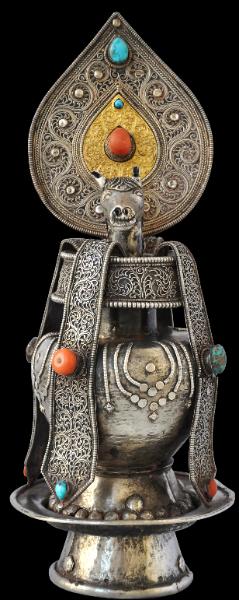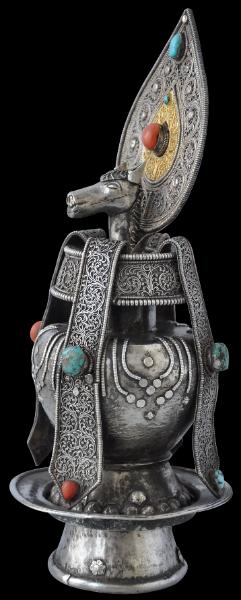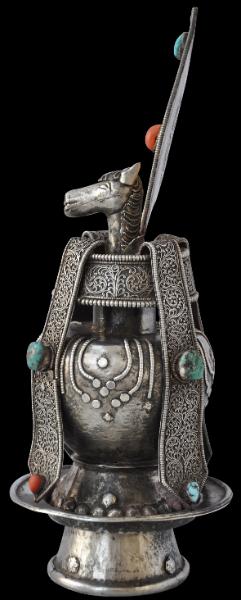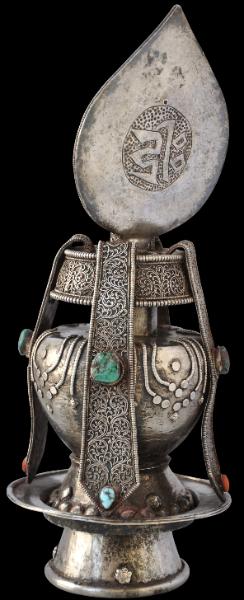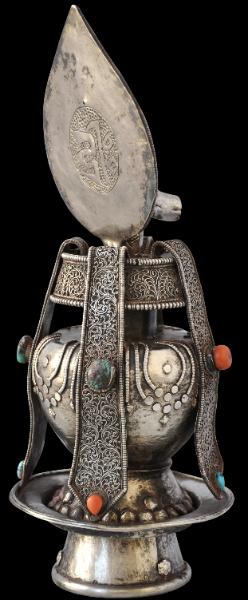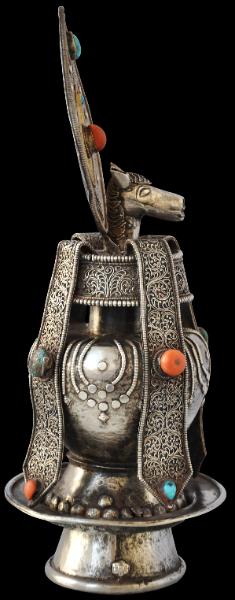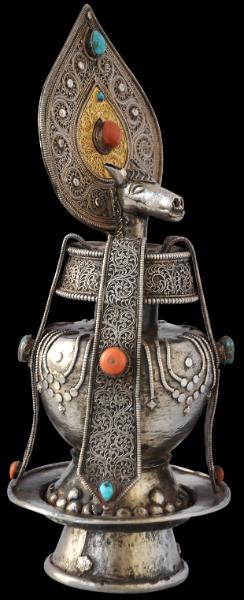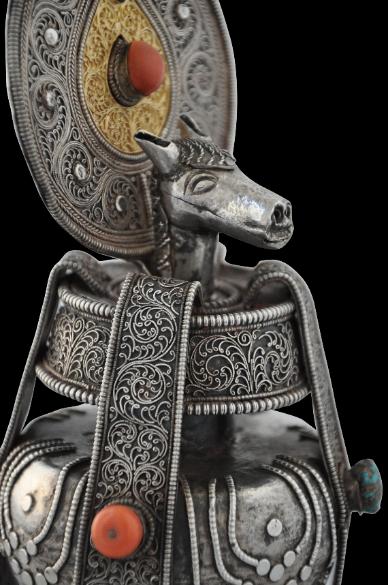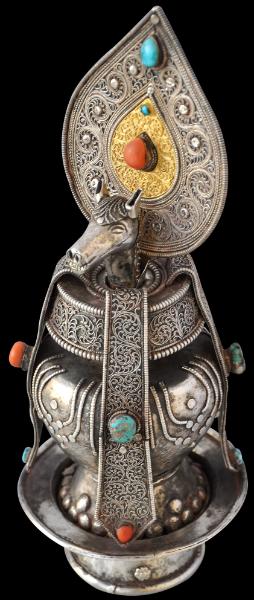
Hayagriva Long-Life Vase, Tibetan/Mongolian
Vase of Longevity with the Deity Hayagriva in Silver & Gold with Coral & Turquoise
North East Tibet or Mongolia
early 19th century
height: 22cm, weight: 499g
This rare long life or longevity vase of hammered and filigree silver features the head of the horse-headed deity Hayagriva protruding from its mouth. Hayagriva’s head is of hammered silver mounted on a wooden peg which allows the head to be secured into the neck of the vase. A silver backing plate rests behind Hayagriva. This is set with a large turquoise cabochon and is decorated with a border of silver filigree and a plaque of high-carat gold overlaid with gold filigree and set with a small turquoise cabochon and a larger central coral cabochon. The reverse of this plate is engraved with stylised lantsa symbols.
The collar of the vase is richly overlaid with silver filigree and is edged with pearled silver wire. Four silver ribbons covered with silver filigree, edged with pearled wire and set with cabochon coral and turquoise flow from the mouth of the vase and down the vase’s body. The body itself is squat and globular and smooth but is decorated on each side with a set of applied hanging jewels. The flared foot, which is embellished with applied silver spheres perhaps meant to denote jewels also, is attached to a pedestal dish which itself sits on a flared foot which is decorated with applied silver flower heads.
Longevity vases have no spout and are the central vases used in rituals, to visualise the mandala and its divine occupants, which are then dissolved into the waters of the vase. It was designed for longevity and prosperity rituals, the attached jewels (real and suggested) being purposeful for the notion that jewels attract jewels, including the jewel of long life.
The style of the vase suggests North Eastern Tibet as the most likely source of origin. Mongolia is also a possibility. It is possible that the vase was made by local Chinese craftsmen working for a Tibetan or Mongolian patron.
In Tibetan Buddhism, Hayagriva belongs to the set known as the Eight Sadhana sections that arise from the Mahayoga division of the Inner Tantras. But in Hinduism, Hayagriva is also known as an avatar of Vishnu. Typically, in Tibet, Hayagriva is depicted on thangkas or the deity’s head is cast in brass as part of the detail of a ritual dagger. This is the first time that we have encountered a vase of longevity featuring Hayagriva.
Provenance
UK art market
References
Thurman, R., & D. Weldon, Sacred Symbols: The Ritual Art of Tibet, Sotheby’s/Rossi & Rossi, 1999.
Beer, R.,
The Encyclopedia of Tibetan Symbols and Motifs, Serindia, 2004.
Inventory no.: 1140
SOLD

